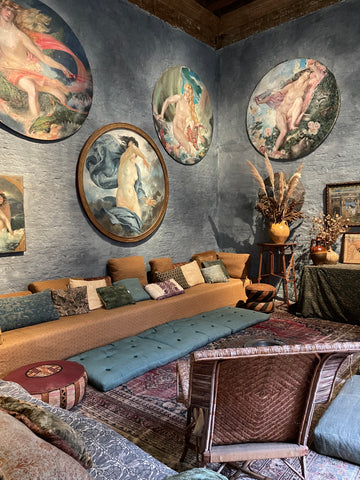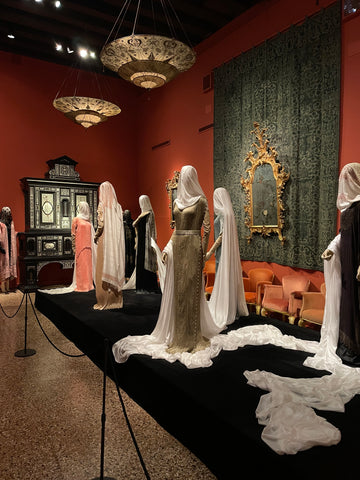Let me take you today to one of the most beautiful places I’ve visited. It’s the Museo Fortuny in Venice also known as the Palazzo Fortuny, which is a Gothic palazzo located in San Marco in central Venice. The house belonged to Mariano Fortuny, an artist, stage designer and textile designer.

 The Palazzo Fortuny has been transformed into a museum since 1975 and is one of the benchmarks for the visual arts in Venice. The museum showcases Fortuny's life and work, including his photography, set-design, and textile designs.
The Palazzo Fortuny has been transformed into a museum since 1975 and is one of the benchmarks for the visual arts in Venice. The museum showcases Fortuny's life and work, including his photography, set-design, and textile designs.
The museum has undergone extensive restoration and has now reopened to the public.
The Palazzo Fortuny is called the Palazzo Pesaro Orfei, also known as Palazzo Pesaro degli Orfei, built in the fifteenth century by Benedetto Pesaro, a member of the prominent Pesaro family, in Venetian Gothic style.
The palace originally had an L-shaped plan, but after 1500, two narrow buildings were built towards Calle degli Orfei.



The San Beneto branch of the Pesaro family died out towards the end of the seventeenth century, and from about 1720, the palace was let to various tenants, including a printer.
From 1902, the palace was the home of Mariano Fortuny, and he lived there with his wife Henriette Negrin who often appears in his photographs.
In 1907, Mariano and Henriette founded their first textile printing workshop in the palace, starting a rich history of textile design. Fortuny was able to purchase the entire Palazzo Pesaro degli Orfei, where he decided to live and establish his own workshop.


 Fortuny is most well-known for his achievements in the field of fashion design. His wife, Henriette Negrin, was an experienced dressmaker who helped to construct many of his designs. Fortuny filled the palazzo with artworks and art that his father collected and those were great inspiration for his work. .
Fortuny is most well-known for his achievements in the field of fashion design. His wife, Henriette Negrin, was an experienced dressmaker who helped to construct many of his designs. Fortuny filled the palazzo with artworks and art that his father collected and those were great inspiration for his work. .



Fortuny manufactured his own dyes and pigments for his fabrics using ancient methods. With these dyes, he began printing on velvets and silks and dyed them using a press that he invented with wooden blocks onto which he engraved the pattern. What I absolutely loved was all the textiles he collected which formed base for his inspiration.


His most iconic garment, the finely pleated silk Delphos dress, was based on his interest in the past and was inspired by ancient Greek garments.


To complement the Delphos dress, Fortuny created loose-fitting coats, capes, and wraps patterned with rich designs.
Fortuny fabrics are known for their tribal and geometric patterns too, which are inspired by ancient methods of dyeing and printing.


Fortuny fabrics are still being produced today, and they are handmade in Venice since 1907.



